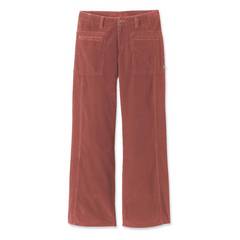Urban Heat Islands: What Are They, and What Can You Do About Them?
Posted on March 22, 2015 by

If you live in the concrete and asphalt jungles of the United States, you’ve probably gotten used to the concept of heat islands without even realizing it. Cities are warmer than the surrounding countryside. When you live in the city, you probably don’t even realize that just a few miles away, the temperature is probably 5 degrees or so cooler. Cities absorb more of the heat of the sun than the surrounding areas and, as a result, retain that heat for longer. Of course this starts a nasty loop of a warmer city requiring more air conditioning, which is more inefficient because the city itself is just so hot. The question becomes: How do we get ourselves out of the mess that we’ve gotten ourselves into?
As with all sorts of environmental issues, the short answer is always stop doing the same things that we did that got us into this mess in the first place. Asphalt is a double-edged sword on the best of days. It’s not good for the environment to begin with, and once it’s there, it stabs us again by absorbing too much heat from the sun. Before you think this is just a problem for the city folks of the planet, take a long moment and look at your own roof. If your house was built to the standards of most homes in the United States, you’ll find that you have a nice coating of asphalt covering your roof to protect it. So most of us are all in the same sinking boat of oil dependence together on one front. Basically we are trapped in an oven, which is our own homes. So how do we get out of it?
Solutions to the problems are relatively simple. Asphalt is naturally a very dark color, giving it a very low Albedo (reflection coefficient) so instead of reflecting light (which includes energy in the infrared spectrum) it absorbs it instead. To give you a frame of reference, a square of fresh asphalt, compared to a square of grass, will absorb 6 times or more heat energy, leading to the five extra degrees of temperature change we discussed earlier.
In an ideal world, you’d have a patch of grass on your roof instead of asphalt, and we call that choice the green roof movement. With this, people create an ecosystem on their roof so they can avoid the heat caused by the darker surface area, which also allows them to absorb water more efficiently to avoid some of the toxic runoff from their asphalt roof systems. It’s a good choice and usually it’s done with large roof systems on bigger buildings. At the more practical level for most of us is the move to much lighter colored roofs or replacing asphalt altogether and going to recycled aluminum roof systems instead. These systems can approach the same reflectivity as the green roofs while not requiring the kind of maintenance that the green roof might require.
Cities are also taking these approaches. They are changing the color of the asphalt and seeing a major change in temperature related to such structures. Some cities have started to change their building codes to make it so that people have to use these heat cutting choices in hopes of one day breaking the Urban Heat Islands completely. Researchers have begun to suggest that the decrease in the requirements of electricity alone would have a much greater effect on carbon dioxide levels that are required to meet the demands caused by these heat islands – it would be one of the most significant things that could be done. The lighter versions of the asphalt also improve safety because it reflects your car lights better, allowing you to see further at night and giving you more reaction time on the roads themselves. Not to mention the heat related deaths that occur each year in cities because of the urban heat island effect.
Combine these bonuses along with new kinds of bioasphalt, which allow us to finally take oil out of the equation, and there is definitely some great hope for the future. And new nano-materials that will allow the asphalt to turn dark in the winter and light in the summer heat. So what can you do when it comes time to look at your roof? Think about saving yourself by breaking the heat island for yourself and everyone around you.

